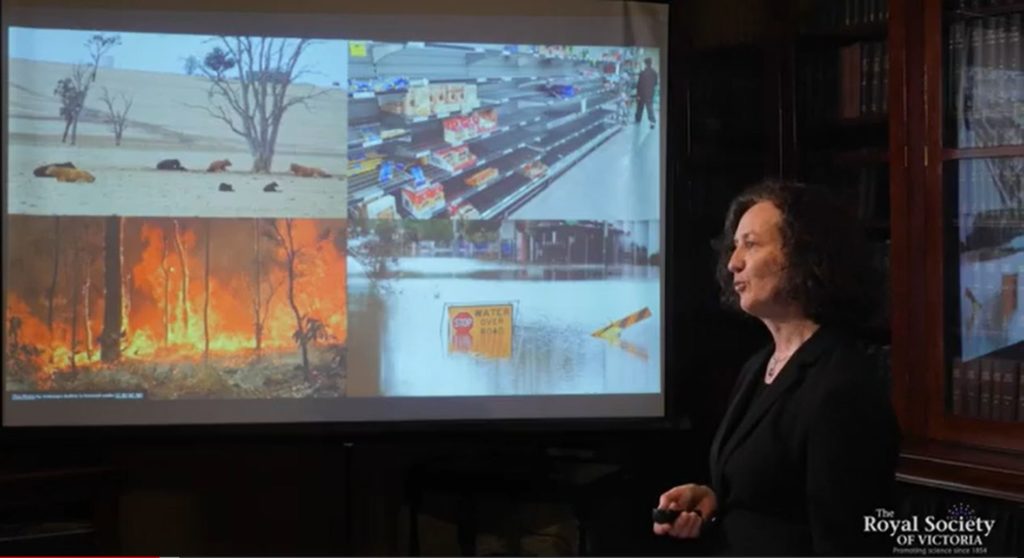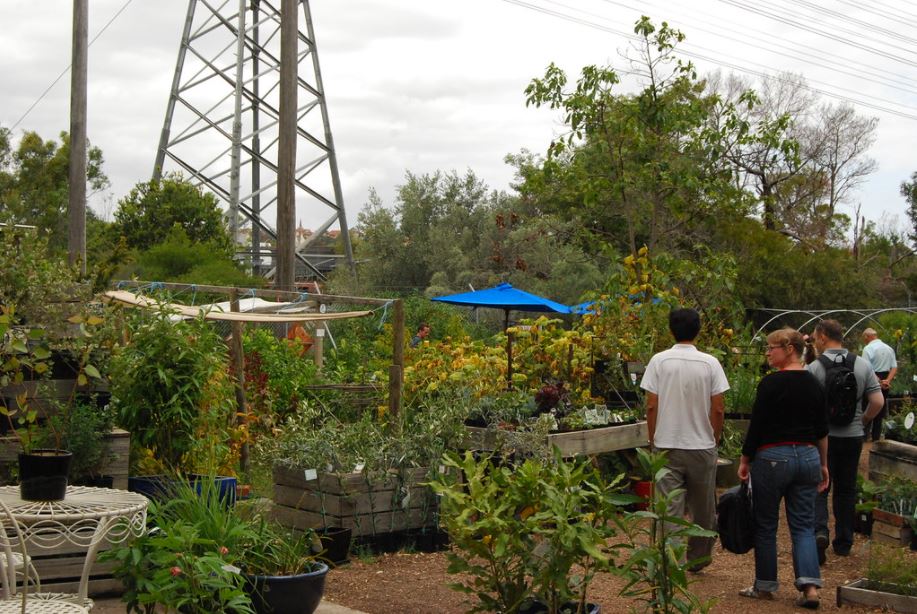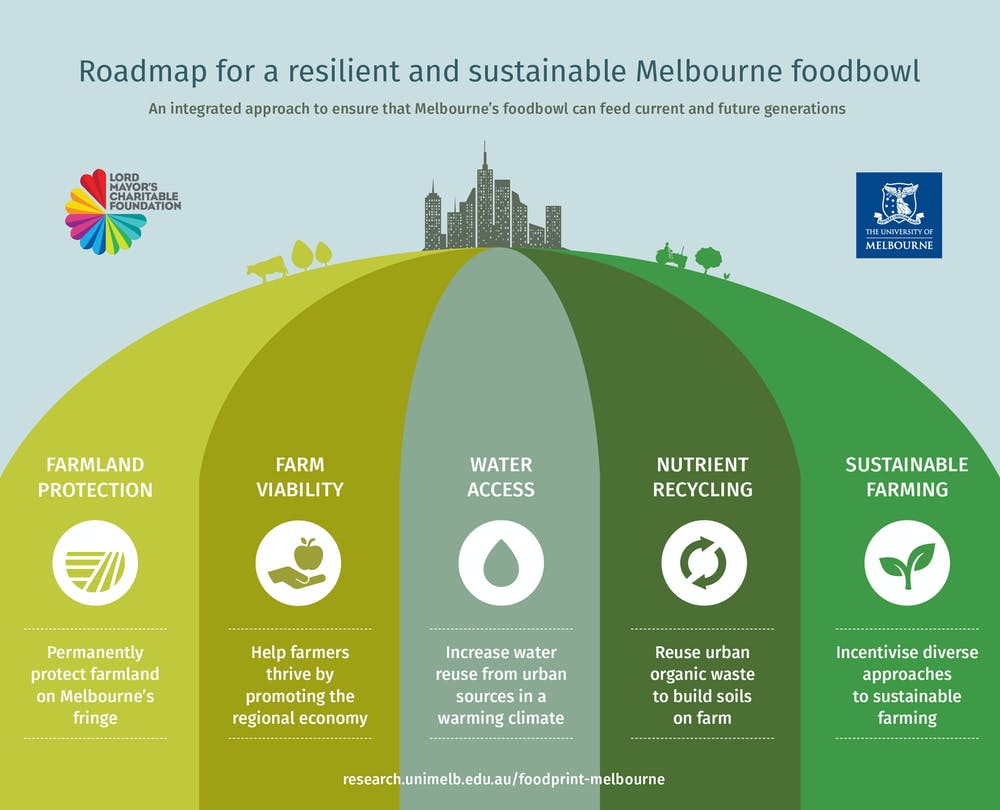Where does your food come from? Will it always be there?
By Catriona Nguyen-Robertson
Science Communication Officer
This article follows a presentation to the Royal Society of Victoria on 23rd of September 2021 titled “Foodprint Melbourne: building the resilience of Melbourne’s food system”, delivered by Dr Rachel Carey (The University of Melbourne).

Last year, we had a wakeup call. The 2019-2020 bushfires and pandemic that quickly followed exposed the cracks in our food supply systems. More Australians experienced food insecurity in the past year than ever. Crops, livestock, and produce were lost – or simply could not get to us. Dr Rachel Carey wants to make our food supply chain much more resilient to future shocks and stresses.
We tend to think of our cities as food secure. Across the nation, we produce enough food to support 60,000,000 people – more than double the population (albeit a large portion is exported). But in the last 18 months, we have seen supermarket shelves barely stocked, farmers leaving their produce rotting in fields or dumped, and students queuing for food vouchers and parcels.
The COVID-19 pandemic disrupted the supply chain in several ways. It shut down major cities, and state and international borders, caused labour shortages on farms and processing centres, increased waste of farm produce with the shutdown of the hospitality sector, and created surges of consumer demand.
Rachel leads the Foodprint Melbourne project, which investigates the resilience of Melbourne’s food system. The pandemic exacerbated weaknesses that were already there due to a changing climate: more frequent and severe fire, drought, and floods. She now wants to leverage lessons learned over the past two years to transform our food systems.
All Australian state capitals have city foodbowls – city-fringe farmland – that are an vital source of fresh food. But as our cities rapidly grow, their food bowls are under threat as farmland is cleared to make room for more houses. Urban sprawl encroaching into the fields that supply our food will mean that we might struggle to feed the growing population. Melbourne’s dwindling foodbowl currently grows enough food to meet around 41% of the Greater Melbourne population’s overall food needs – but how do we get that 60% more?
Urban farming is one solution. There are many green spaces in the city, including parks, median strips, golf courses, and rooftops, that we could be utilising to grow edible produce. CERES, a non-for-profit community-run environment park and farm, saw a high demand for its food boxes as lockdowns forced people to shop more locally than ever before. On a 250 m2 patch in the inner city, urban farmers grew a multitude of fruit and vegetables for nearby residents.

Rachel advocates for cities to increase their urban farming capacity as an “insurance policy” in the event of natural disasters or pandemics. Local food production, while not sufficient to be our only food source, can be a buffer against future shocks that disrupt supply chains to fill the gaps.
We can also rethink how we deal with waste to create circular economies. Cities have access to waste streams that can reused within the system. Food waste, for example, could be converted into compost so that nutrients in organic waste are returned to the soil. City wastewater can provide a relatively secure source of water for food production in a drying climate. There is also a financial benefit to the closed loop: keeping money circulating within our own economy when we purchase food from local farmers and suppliers and give resources back to them.
In the case of disruptions, Rachel believes the system must be more adaptive and innovative. Drastically reduced workforces due to social distancing measures meant that even if food was harvested, it was not being properly sorted and distributed. We could pop up more local food distribution centres, have online farmers markets to provide farmers a platform to directly sell produce to consumers, and encourage people to work at different times. Rachel’s team has many ideas waiting to be put into action.
We similarly need greater diversity within the system. In addition to a variation of scale – from urban plots and small community gardens to large enterprises – we also need geographic diversity in the locations of our food source in the case of rerouting like with bushfires. Farmers should also vary their types of crops and livestock so that there is also a backup if one is impacted.
If your pantry and fridge stocks remained unscathed in the past 18 months, then perhaps you are among the more fortunate. One of the biggest victims of supply shocks is not the food quantity, but the equity of food distribution.
Supply disruptions can lead to spikes in food prices. When this happens, people on low incomes and those already food insecure are most affected. Many people have been worried about how they will afford to eat if/when they lose their jobs or how they will get food during self-isolation. Importantly, an increasing number of people are unable to afford enough nutritious food.

As it is, fewer than 5% of Australian adults eat the recommended number of vegetable servings daily. If everyone did, we would not have enough. Foodprint Melbourne therefore aims to increase equitable access to fresh, healthy foods and promote sustainable production for current and future generations of Australians.
Based at the University of Melbourne’s Faculty of Veterinary and Agricultural Sciences, Rachel’s team works with a range of stakeholders to ensure that their research has impact. The team is planning interventions and collaborating with local councils and management bodies to enact cross-sector and collaborative approaches to food policy.
An equitable, food secure future is possible. By strengthening local and regional food supply chains, maintaining city-fringe farming lands and developing urban farming approaches, creating circular food economies to minimise waste, and adopting greater flexibility, we can build a resilient system. Rachel is paving the way forward now to ensure access to food for generations to come.






